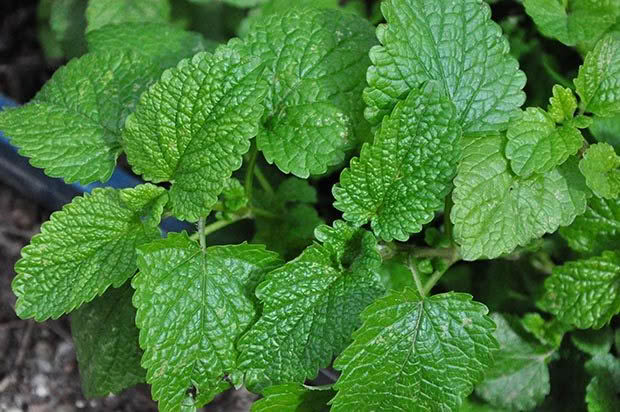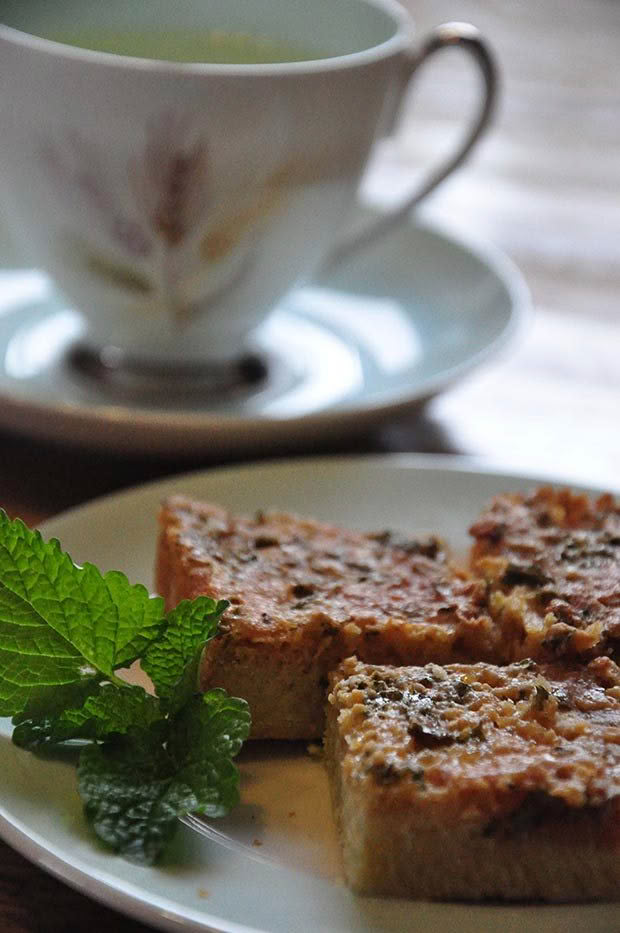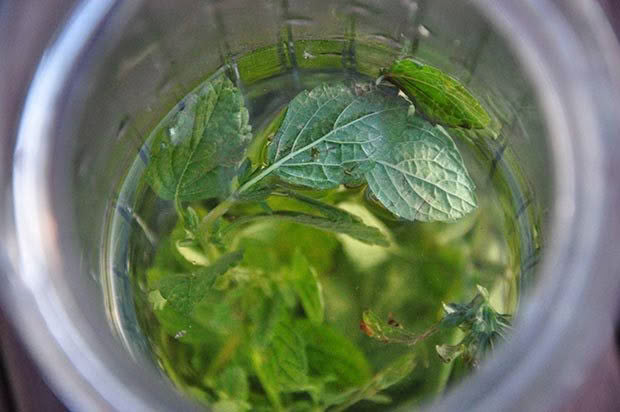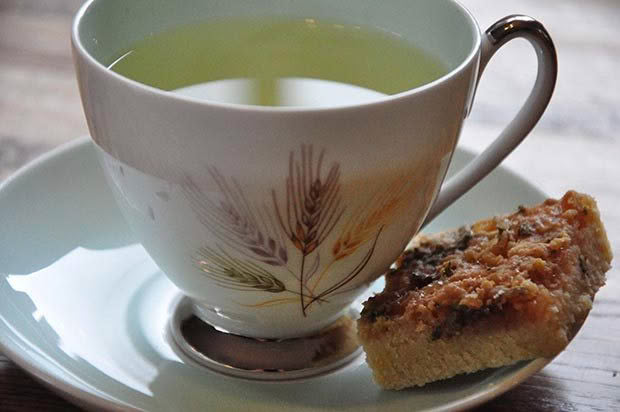How to grow lemon balm and make lemon balm tea

It looks a bit like mint, it acts a bit like mint, but this herb is just balmy.
Words: Jenny Somervell
I have finally found a herbal tea my husband Ken will drink: lemon balm with a touch of honey. He likes the taste, subtle lemon with a hint of mint and honey.
The word balm is an abbreviation of Balsam, the sweetest-smelling oil, and refers to lemon balm’s honeyed sweetness.
Ken doesn’t have a problem with baldness (yet!) but it may also help him retain his youthful looks. Swiss physician Paracelsus swore by lemon balm (Melissa officinalis), calling it an ‘elixir of life’ which could totally revitalise a man. Charles V drank Carmelite water ‘eau-de-melisse des carmes’ consisting of spirit of balm, lemon peel and nutmeg or angelica root.
This ‘miracle water’, dispensed in the 17th century by French Carmelite nuns, was believed to improve memory and vision, and reduce rheumatic pain, fever, melancholy and congestion.

Subtle lemon with a hint of mint and honey.
Regardless of the claims for extending life, lemon balm tea is recommended. It has been used to dispel melancholy, calm the nervous system and as a tonic tea ever since its introduction by the Ancient Turks. Its relaxing properties make the tea useful as an evening drink to promote sleep, and it can also be used to treat colic, nausea, poor digestion, nervous headaches and to help prevent colds and flu. For mild fevers it induces mild perspiration and makes a pleasant and cooling drink.
A MOST CORDIAL DRINK
Lemon balm has a long history of use in beverages – hot, cold, cordial, fruity, sweet and alcoholic. 17th century writer and gardener John Evelyn described lemon balm steeped in wine as having a ‘cordial and exhilarating effect’, and it was frequently incorporated in cordials and liqueurs. Try garnishing fruit drinks with tiny sprigs or float the pretty variegated leaves in a glass of punch.
Lemon balm is used commercially to make perfumes, toilet waters and liqueurs. In cooking it can be used anywhere where a lemon flavour is called for: salads, veges, fish and poultry dishes, sauces, marinades and fruit dishes. It goes very well with pears and stewed fruit, often replacing some of the sugar needed.
BOISTEROUS BALM
My first encounter with lemon balm was not promising. In my student days, it took me a whole afternoon to clear an overgrown bed of the stuff and I vowed never to grow it. Even now, contained in a low trough, I keep a vigilant eye for signs of escape.
Lemon balm can be a precocious seeder but it is less invasive than mint, especially in drier soils. Remove flowering heads before they seed, as this also encourages fresh re-growth for harvesting when the plant has the best flavour.

Lemon balm has a long history of use in beverages – hot, cold, cordial, fruity, sweet and alcoholic.
In appearance lemon balm looks a lot like mint. The square stems bear rich green leaves which are toothed and wrinkled. In drier, less fertile soils the leaves may be lighter green. It is a favourite in fragrant gardens and well worth planting by a path where it can be brushed against to release its sweet citrus aroma. A couple of seed-grown varieties, Melissa officinalis ‘Quedlingburger’ and ‘Citrata’ have a stronger scent due to their higher essential oil content. Another variety, M officinalis ‘Variegata,’ has attractive, gold-splashed leaves.
GROWING LEMON BALM
Lemon balm is easy to grow and requires little maintenance, apart from keeping it constrained. The green-leaved forms will grow in sun or shade but the golden-leaved forms are better in shade to avoid scorching in summer. The shallow roots appreciate extra water in dry spells, though less than mint. While it will grow in any soils, lemon balm produces the best tender leaves in a rich, well-draining soil. I keep at least two plants on the go so I can cut them back at different times.
A good cut-back two or three times in the growing season will ensure abundant leaves for harvest. After cutting back, give plants a liquid feed or a compost mulch, but not too rich or they will go berserk.
BALM FOR THE BEES
‘The hives of bees being rubbed with the leaves of bawme, causeth the bees to keep together, and causeth others to come to them.’
Bees and balm go together. Bees will seek out lemon balm flowers as their most preferred nectar source, and leaves rubbed over a hive will attract and calm a colony. Pliny reported that ‘no flower gives them greater pleasure’, and it is one of the most attractive plants to bees, and rich in nectar, making a fine honey.
For nearly half of its 2000 years of recorded use, lemon balm was grown only as a bee plant (the generic name Melissa comes from the Greek for bee). Lemon balm honey was highly esteemed by the Greeks and Romans and had numerous medicinal uses. Today it is worth planting around orchards and vegetable gardens or wherever honey bees are wanted for pollination.
HOW TO MAKE LEMON BALM TEA

Lemon balm tea and Lemon Square with Lemon Balm.
Most books recommend a teaspoon dried or a tablespoon of bruised fresh herb per cup. However lemon balm tends to lose flavour in hot water and more is better if you want a strong or more therapeutic tea. I simply pick a good handful for a teapot. Place inside a tea infuser and pour over hot water (not boiling). Steep, covered, for 4-6 minutes (longer for a stronger brew), or simply place in a teapot and pour out using a tea strainer if available. With a little sugar and lemon juice or peel you can have a refreshing summer iced tea as well.
HOW TO DRY FOR WINTER
Some flavour is lost on drying lemon balm but it is still worth doing. Harvest just as flower buds are forming when flavour is strongest and dry quickly to prevent blackening. To air dry: tie stems in bunches upside down and hang in a dark, airy place.
To oven dry: snip off leaves and dry on a rack in a slow oven or dehydrator.
To dry by microwave: dry on high for 1 minute then in 30 second bursts until leaves are almost crisp.
Once dry, strip leaves and store in airtight containers in the dark.
LEMON BALM BLENDS
The mild flavour of lemon balm blends exceptionally well with other herbs:
■ 1 part lemon balm, 1 part peppermint – eases a nervous stomach and induces sleep.
■ 3 parts lemon balm, 1 part borage, 1 part spearmint – a stimulating tea, also good in fruit drinks or steeped in wine.
■ 2 parts lemon balm, 1 part orange peel, ½ part rosemary – throat soothing with honey, used to flavour wines.
■ Lemon balm, sweet cicely, lemon verbena – a refreshing, light lemon tea.
■ 2 parts lemon balm, 1 part catnip, ½ part chamomile – promotes sleep.
■ Equal parts lemon balm, mint and anise hyssop – a delicious breakfast brew.
SAVOUR THE FLAVOUR
Lemon balm smells stronger than it tastes so you need a lot in cooking. Mary Browne suggests 12 sprigs of 5-8cm long would not be over the top. Sprigs can be added whole for teas, drinks or in cooked dishes and removed afterwards.
If using for salads or garnish, nibble-test leaves for texture. Tear if really tender, otherwise chop finely: use 1-4 tbsp for 2-4 servings.
Recipe: Lemon Balm Scallops
This is a delicious entree or a main, depending on how many scallops per person you have available.
INGREDIENTS
2 dozon scallops
1 onion, finely chopped
8 button mushrooms (four if large)
4 cloves garlic, crushed or finely chopped
½ red & ½ green capsicum
8 cherry tomatoes, halved
grated rind & juice of a lime
2 tbsp butter
6-8 sprigs young lemon balm, enough to provide 2 Tbsp of leaves when finely chopped
METHOD
Halve or quarter the mushrooms, depending on size and thinly slice the capsicums. Heat a tablespoon of butter in a heavy pan and sauté the onions, adding the mushrooms and capsicums, stirring frequently until hot but still slightly crisp. Decant with any liquid and keep warm in the oven. Heat the remaining butter in the pan. When hot add the lime rind and the garlic, followed immediately by the scallops. Cook on high heat, turning frequently until just cooked (2-5 minutes). Add the cooked veges back in, stir and add the lime juice and finely-chopped lemon balm. Serve on rice or noodles if a main, or a bed of lettuce greens if an entree.
Recipe: Lemon Balm Wine Cooler

Lemon Balm wine cooler.
A great low-alcohol cooling drink for the end of a hot day, but needs to be prepared in the morning.
INGREDIENTS
1 bottle white wine (Riesling or Pinot Gris work well, don’t use a dry wine)
1 bottle dry ginger ale, chilled
6-8 sprigs of young lemon balm leaves
lots of ice
METHOD
In the morning crush the lemon balm in your hand and place in a large carafe. Decant the wine over it. Bruise the lemon balm thoroughly with a wooden spoon or similar. Cover and refrigerate for the day. When ready to relax on the warm summer evening, fill tall glasses with ice, strain the wine and fill the glasses half and half with the flavoured wine and chilled ginger ale.
Love this story? Subscribe now!
 This article first appeared in NZ Lifestyle Block Magazine.
This article first appeared in NZ Lifestyle Block Magazine.
